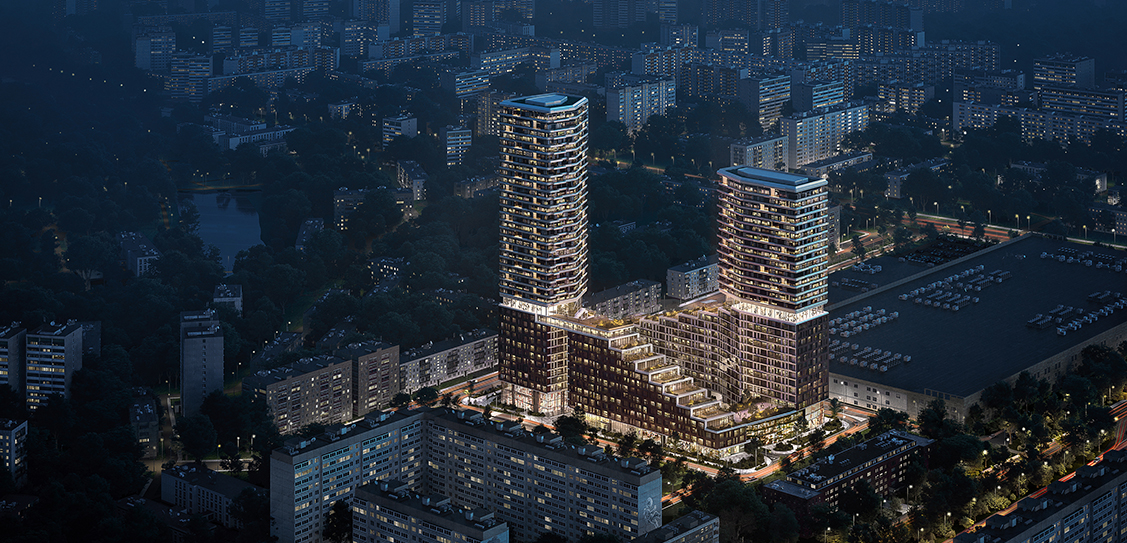UNStudio’s design proposal for this multifunctional 1.93 ha complex, includes a courtyard park, 71,000 sq m of housing, a kindergarten, fitness centre, commercial spaces and underground parking.
Following the approval of a new masterplan for the city in 2012, which allows residential construction on the former industrial territories, Moscow is currently experiencing a construction boom in the residential sector. As a result, the city’s appearance is changing, however, this growth brings with it the challenge of creating sustainable and healthy communities.
UNStudio’s design for 31 Krzhizhanovskogo Street, ‘K31 Courtyard’, addresses the challenges of community building within a dense urban setting. The development is designed to create a prototype of future living that puts the wellbeing of the residents first, encourages indoor-outdoor living, cultivates an atmosphere of home and safety, and provides a range of sustainable social opportunities.
The design for K31 Courtyard marries together two typical residential building typologies; a stepped podium that surrounds a private courtyard, and two towers that face each other diagonally in such a way as to provide the best possible view corridors for all the residents and enable increased daylight for the apartments.
The podium design, with its stepped terraces, is designed to provide sufficient sunlight for the apartments that face the inner courtyard. These stepped terraces also create a unique feature for this residential project, as they can be used for additional amenities for the adjoining apartments.
The development offers a wide range of apartment types and layouts to address the needs of different residents. Typology division is made in such a way that it minimises the separation of different social groups, while entrances and common spaces are shared by all. The main amenities are also located on the threshold between apartment types.
For K31 Courtyard the notion of a neighbourhood has multiple dimensions. Referencing the old-style Moscow courtyard, which was quiet and private, while also being accessible and safe, the development is designed to extend horizontally and connect to the city by means of the transparency and impermeability of the ground level. Playgrounds and green recreation spaces in the courtyard are also visually connected to pedestrian routes on the outer perimeter of the block.
The stepping roof terraces create a further diagonal neighbourhood, where the roof apartments on the podium can be personalised by adding curated terrace units such as verandas, orangeries or greenhouses.
An intricate variety in the facade design is achieved through the use of a parametrically modelled modular system, which also enables circularity in the construction method. A combination of modules with windows, bay windows, french balconies and standard loggias is introduced in a strong grid. This results in increased apartment types, with numerous indoor-outdoor variations.
To enhance the strong characteristics of the podium and the two towers, the horizontal functional division is made recognisable in the facade design. The podium facade on the outer perimeter uses brick and black metal to resemble the surrounding buildings and preserve the heritage of the location as a former industrial territory.
The two towers that top the podium have panoramic windows and loggias. The light materialisation and colour of the towers, which includes large glazed reflecting surfaces, is designed to give a less weighty appearance. This is especially important when viewed from the courtyard, so that the volumes of the towers appear to visually dissolve into the sky, thus increasing the sensation of an open inner space.
The inner facade of the courtyard employs a similar lightness to the tower volumes, with natural wood creating a strong connection to the green, tree-planted courtyard and a warm and comfortable atmosphere for the residents.



